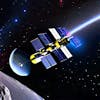S02E33: SpaceX Mishaps, Hawaiian Fires from Space, and Martian Exploration: A Special Edition

Hosted by Steve Dunkley & AI Co-host Hallie*
**Date:** 17th August 2023
**Highlights:**1. **Special Edition:** Steve surprises listeners with an impromptu episode on a Thursday.2. **Space Nuts Revisited:** Steve revisits a segment from the...
Hosted by Steve Dunkley & AI Co-host Hallie*
**Date:** 17th August 2023
**Highlights:**1. **Special Edition:** Steve surprises listeners with an impromptu episode on a Thursday.2. **Space Nuts Revisited:** Steve revisits a segment from the renowned "Space Nuts" podcast, hosted by Andrew Dunkley and Professor Fred Watson.3. **SpaceX's Starship Launch Mishap:** Hallie dives into the details of SpaceX's Starship launch mishap, discussing the aftermath, the FAA's ongoing review, and the potential implications for future launches.4. **Hawaii's Catastrophic Wildfires:** Steve sheds light on the devastating wildfires in Hawaii, which were visible from the International Space Station. The fires emphasize the severe consequences of human-driven climate change.5. **Astronomy Daily's Ranking:** The podcast proudly announces its position as the number four podcast in the astronomy top 100 charts.6. **Exploring Martian Caves with Robots:** Steve discusses a new robot concept with expandable appendages designed to explore the challenging terrains of Martian caves and cliffs.7. **Enceladus' Geysers:** A throwback segment from "Space Nuts" highlights the fascinating geysers on Saturn's moon, Enceladus, and the potential for life.
**Connect with Us:**- Catch all back editions of Astronomy Daily and Space Nuts on bitesz.com or all podcast platforms.- Join the discussion on the [Space Nuts Podcast Group on Facebook - Have astronomy or space science questions? Drop us a line on our Facebook page, and our team, including Tim Gibbs, Andrew Dunkley, and Professor Fred Watson, will get back to you.
**Closing Note:** Stay curious, keep looking up, and always wonder about what's happening in your skies!
AI Transcript
Surprise, surprise. It's Steve here with astronomy daily for a Thursday of all days. Yes. I found myself with a couple of moments. So I thought I might drop you all a line and do a special edition. Uh, just, what it's just one of those weeks where I find myself with a spare hour or two. So on with the show. It's the 17th of August to, uh, 2023. Welcome aboard. Steve Dunkley. Yeah, something a bit different today. I'm going to be revisiting a segment from our parent podcast with Andrew Dunkley and Professor Fred Watson, who present the amazing Space Nuts podcast, which I'm sure most of you are aware of. And of course with me as always in the studio, coming in from the ether is my fabulous companion, Hallie, how are you Hallie? Wow, Thursday, how did you swing it? Well, just lucky today. Well, you'd better get into it. I know you don't have a lot of time during the day. Yes, well as I mentioned, we'll be catching up with the boys from Space Nuts, Andrew and Fred. Hallie, what have they got for us? It's one of my favourite stories about the geysers on Enceladus. Oh, that sounds fantastic. Always. And have you got something for us Hallie, can you start us off? Yes, this story about SpaceX's Starship Launch Mishap Report. Okie dokie, lead on Macduff. SpaceX has submitted to the U.S. Federal Aviation Administration FAA its final report about the debut launch of its Starship vehicle, which ended with a bang four minutes after liftoff. Oh right that was back in April and the flight was only four minutes or so wasn't it? That's right, SpaceX launched a fully stacked Starship for the first time ever on April 20th, sending the giant rocket spacecraft combo aloft from its starbase site in South Texas. The test flight aimed to get Starship's upper stage partway around Earth. with splashdown targeted for a patch of the Pacific Ocean near Hawaii. But that didn't happen. Starship's two stages didn't separate as planned, and SpaceX beamed up a self-destruct command, which resulted in the vehicle's detonation high above the Gulf of Mexico. The launch also caused considerable damage at Starbase, blasting out a crater beneath the site's orbital launch mount and raining chunks of concrete and other debris on the surrounding area. which issues launch licenses, to determine exactly what happened on April 20 and what steps to take to boost the chances of a more successful outcome in the future. Elon Musk's company has now filed that report, but that doesn't mean Starship has been cleared to fly again. SpaceX has submitted its final mishap investigation report to the FAA for review. That review is ongoing, FAA officials said in an emailed statement. When a final mishap report is approved, it will identify the corrective actions SpaceX must make. the statement added. Separately, SpaceX must modify its license to incorporate those actions before receiving authorization to launch again. Do you like how they call it a mishap report? It sounds like someone is being naughty? Yeah it's like Starship gets sent to the naughty corner. How funny. But they've already installed a new water deluge system for the launch mount to dampen the immense power output of Starship's giant super-heavy first stage. and they are prepping booster 9 and an upper stage called ship 25 for Starship's second full-up test flight. Ever the optimist, Elon Musk is hoping to have it all ready in 6 to 8 weeks. But don't hold your breath, logistical hurdles still need to be cleared regardless of the technical progress that SpaceX has made. The FAA is still reviewing the mishap report, for example. In addition, a coalition of environmental and indigenous groups is currently suing the claiming it didn't properly assess the damage that Starlink launches could cause to the South Texas ecosystem and community. And let's hear what you've got for us today, Steve. Now you may have heard of, if you haven't by now, you must not be near a news service, the deadly wildfires in Hawaii. They were seen from the International Space Station, floating 259 miles, that's 417 kilometers above the Pacific Ocean in the hard hit town. of Lahaina in Hawaii. The satellite imagery captured by the International Space Station on Saturday, the August 12th, shows the Hawaiian island of Maui four days after the wildfires broke out on land. And it's quite devastating. The photo taken as the Spaceborne laboratory orbited. All that way above the Pacific Ocean as of Wednesday, that's August 16, the death toll on Hawaii's catastrophic fires rose above 100. Shortly above the confirmation of this figure, Governor Josh Green addressed the public saying that we are heartsick that we've had such loss. And not only this devastation being deeply felt and thoroughly documented around the world, especially because it emphasizes a deadly consequence of human driven climate change, but also being recorded from space. Yes, the ISS sees all. And if you would like to go to space.com and have a look at the photograph, it's just a mass of cloud and it's most definitely devastating and closer to the ground, there's plenty of people doing drone overflies of the affected areas and it's very upsetting to look at. So it's... No surprise that our space-borne observatories are seeing that in the way that they are. Thanks again for tuning in. This is astronomy daily on the 17th of August 2023 and don't forget you can catch all the back editions of astronomy daily and space nuts at bytes.com and also on anywhere you check out podcasts nowadays, we're on all of them. So the good news is that as of yesterday, we received word that we are the number four, Astronomy Daily is the number four podcast in the astronomy top 100 charts. So thank you very much for supporting this podcast. We are extremely chuffed and proud to be presenting you with. all the stories that have come across our desk. So we'll continue doing that and please drop us a line and let us know what's happening in your skies. Do that on the podcast page, which is space nuts podcast group on Facebook. We were there. Everyone's there. You'll, you'll find Tim Gibbs who presents mainly Fridays, Steve Dunkley. That's me mainly Mondays, even though it's Thursday today. And you'll find Andrew Dunkley and professor Fred Watson. floating around on those pages. And if you've got a question that you'd like to pose, by all means, anything to do with astronomy, space, science and stuff, one of us will get back to you and we'd love to start a discussion, but especially we'd love to find out what's happening in your skies. Thanks again, everybody, for your support. Now onto something a little bit more, I don't know, mechanical, a robot with expandable. appendages could explore Martian caves and cliffs of all things. Plenty of areas in the solar system are interesting for scientific purposes but hard to access by traditional rovers. Some of the most prominent are the caves and cliffs of Mars which reminds me of some of these stories that I used to read when I was a kid. Where exposed strata could hold clues to where the life ever existed on the Red Planet. And who didn't know that they were going to say that next. So far, none of the missions sent there have been able to explore these difficult to reach places, but a mission concept from a team at Stanford hopes to change all that. The concept known as ReachBot. Boy, they're going to have to employ somebody to come up with some better names. Maybe me. Is a robot that can support itself using multiple articulated appendages to navigate terrain that would be difficult to reach. using other navigational techniques. In addition to being able to traverse complex ground patterns, it could also in theory, at least scale sheer cliff faces. It was initially pitched as a NASA's Institute for Advanced Concept Project, where it was awarded phase one grant back in 2021. The authors described the idea as a fusion of two separate techniques developed for different purposes. mobile manipulation robots and deployable space structures. Mobile manipulation robots are relatively common in space exploration. Platforms like RoboNaut and Lima utilize robot technology to perform tasks like maintaining the ISS and inspecting other space habitats. However, much of their mobility is limited. Efforts like Lima, pride themselves on being able to navigate tricky terrain, but even if Even it would have difficulty scaling a cliff face. So wait and see how these robots Actually face up even if they do get to Mars. Let's hope I like robots. Well that goes without saying And now here's one of my favorite segments from a past episode of space nuts featuring Andrew Dunkley and professor Fred Watson Steve go put the kettle on This first story I find really exciting because there's a lot of attention being paid to Enceladus for all sorts of reasons, notwithstanding the potential for life, but these incredible geysers that have been recorded previously have been seen again, this time by the James Webb Space Telescope. Yeah, so this is really quite exciting news and it highlights once again the capabilities of the James Webb Telescope as a tool for science that sort of... par excellence. The observations have been made of Saturn's moon Enceladus. Now we haven't yet seen those observations, so I haven't seen any images and that's probably partly because the research paper that's describing this work is still pending, so it hasn't yet appeared in the scientific press. And I guess the people who are responsible for it are essentially, you know, keeping their powder dry to basically stop the media getting hold of it before they've actually published it. Yeah, that happens. Which does happen, and you know that as a media person. I've never done it myself. Gosh. Never break an embargo. Break an embargo, no. And I have to say I have neither, because I get all these things that are embargoed, and I too don't break them just because it's the wrong thing to do. So, yes, I think that's what's happening there. But this is scientists at the Goddard Space Flight Center who have presented these results, actually, at a conference in the Space Telescope Science Institute, which is in Baltimore, the place I visited a long time ago. So going back to the matter in hand, Saturn's moon Enceladus we've known since the flybys of the Cassini spacecraft in the early 2000s. I think it was as early as 2005 that the ice plumes being emitted from Enceladus' south pole were discovered then. In fact what first... hit the headlines, I don't know whether you remember this, I'm sure you and I talked about it, but there were these things near the south pole of Enceladus which were markings that were described as tiger stripes, because they do look a bit like tiger stripes, and then it was discovered that there were actually cracks through which what probably started off as water, but as soon as it hit the vacuum of space, became ice crystals, and that's what were being observed by the Cassini Castini made several passes through those ice crystals so that using the equipment that it had on board, it could detect some of the chemicals that were in them, principally H2O, so water there, but also molecular hydrogen. And I think some silicates as well were detected, which tended to give you the insight that the water that was underneath the ice had been in contact with rock. before it was spat out to form the ice crystals. And the molecular hydrogen was interpreted as being possibly symptomatic of the fact that there were these deep... Well, it'll come to me in a minute. The black smokers, that's the expression I was looking for, down on the floor of Enceladus' ocean, the sub ice ocean that there were. basically hydrothermal vents in the ocean floor. So that was all very exciting. But of course, with Cassini's mission coming to an end in 2017, all that stopped and so further research was not possible until now, yay, when the James Webb Telescope has been directed at Enceladus. And they've kind of hit paydirt because they've discovered an ice plume that is far bigger. than any of the ones that were observed by Enceladus. And that sort of makes you wonder why that might be. Is there a, you know, one of the cracks, one of the tiger stripes has opened up a bit to allow more water through, or is it something to do with the gravitational pull of Saturn, what's happening here? And so that's one of the things that is being studied at the moment. Apparently this ice plume extended quite a lot further than. diameter of Enceladus itself, which is 500 kilometers. Yeah, that's one of the things they've discovered as a consequence of this observation is how big these geysers are. Yeah, and I remember from that time an image of Enceladus, which was taken when Enceladus was battle-lit, so the sun was behind Enceladus. But you could see that the plumes of stuff that were coming off Enceladus were actually feeding into Saturn's E-Ring. The E-Ring is one of the diffuse rings outside the main ring system. And that was great because that answered the puzzle of where the E-Ring came from. It actually comes from ice crystals that are generated by Enceladus. So all that's sort of backstory. But now we have these new observations. And in principle, we've got a new way. of, you know, investigating these things because the James Webb is equipped with some very sensitive infrared detectors, spectrometers and things of that sort. It's possible that we might get some new insights into what chemical elements and perhaps even molecules are contained within those ice plumes. Although I think the, you know, the... the bottom line really in the end is going to be sending a spacecraft to Enceladus. Yes. Just going back to what we knew these jets contained, we've got quite a big list in addition to the ones that I mentioned earlier, methane, carbon dioxide and ammonia. These are of course all organic molecules, molecules containing carbon. And Babel fish. Probably Babel fish as well, yes. if you need to translate from one language to another. Anyway, it might be even more exciting than Babel fish, if anything like that could be possible there, because that methane could turn out to be from methanogenic organisms, we don't know that, but all of this still highlights Enceladus as a fantastic target for... further exploration. And a couple of things come to mind there, a mission which is proposed called the Enceladus Orbilanda, and that name tells you what it's going to do. It will orbit the Moon if this goes ahead for about six months, and actually flying through those ice plumes and then land and look at the exact details of the surface. It probably would not try and penetrate the ice though. That's the province of one that you and I have spoken about before. Yes. Something called EEL, which is a bit like an eel, something called a snake robot. EEL is an acronym for Exobiology Extant Life Surveyor, or EELS actually. And one of the brains, one of the principal, you know, boffins behind that. is Linda Spilker who was with us a few years ago to give the Alison Levick lecture, Linda Spilker being the Cassini mission scientist, so very, very well equipped to propose new missions and I think Elza was one of the ones she was involved with. Yeah, if that doesn't work of course the backup mission is the Black and Decker mission, which... Yes, that's right, or if you really need it the... the JCB or the Caterpillar mission with the heavy lifting stuff. Or the Ryobi mission. Any of those. Any of those that can drill. Sure. If you go with Ryobi, you only need one set of batteries. That's different. That's right. Yeah, I actually had a, I've got a Ryobi leaf blower and the leaf blower died before the battery did. Oh, interesting. It is, isn't it? Quite surprising still. That was still very much alive, but being tall after the cardboard tube on the end to extend it down to blow away the leaves. Anyway, that's a different story. It is indeed. I must say whoever thought of Enceladus or Belanda, Yeah. I mean, come on, couldn't you come up with something better than that? I think in the end it would have a nicer name. But yeah, like you, I'm finding this really exciting that the Webb Telescope now can turn its... very substantial capabilities onto a moon like Enceladus. Certainly nowhere near the same resolution as we had from the Cassini mission, but lots to find out nevertheless. Yes and there's so much attention being paid to Enceladus and its similar cousin of Jupiter, which is, I'm stretching to remember the name of it, hang on, hang on. Come on, come on, come on, think, beginning with T. Yes, T-I. No, Texas Instruments. No, TI is Titan. I wasn't thinking of that. I was thinking of the other ice moon. Oh, well Titan's definitely an ice moon, but it's another notion. I mean, the other ice moons that we really know a lot about are Europa, Ganymede, Exactly. What kind of life we don't know but if we can get up there and find it and study it and see what it's made up of and whether or not it's the same stuff as us that would be really interesting. Exactly because if we found life there, living organisms there, it would suggest that wherever you've got the raw materials for life and the right environment you're going to guess it. And it was interesting stuff. Change the answer to the Drake equation. That's correct, it would. Yeah, we're all hoping for that. The Drake equation though, well, it certainly puts one further input into the Drake equation. It doesn't give you the answer, because that's all about intelligent life. Yes. It would be astonishing, though, if we found vertebrates or something with some kind of intelligence. I keep saying it. I keep saying it. Krill. Krill, that's right. Hyper intellectual crew. Hyper, yes. I'm sure they're around there somewhere. you hit it first hyper intelligent krill that's what we can look forward to thanks for joining us on astronomy daily this has been a special edition for Thursday because I escaped the bump and grind of my usual day thanks for joining us looking forward to seeing you don't forget Tim Gibbs on Friday Steve Dunkley on Mondays and if we can swing it there'll be more of the same and thanks for joining us and making us number four globally for the astronomy top 100. This has been Astronomy Daily for another day. See you next time.
New to Astronomy Daily - The Podcast?
Here are some great episodes to start with.













